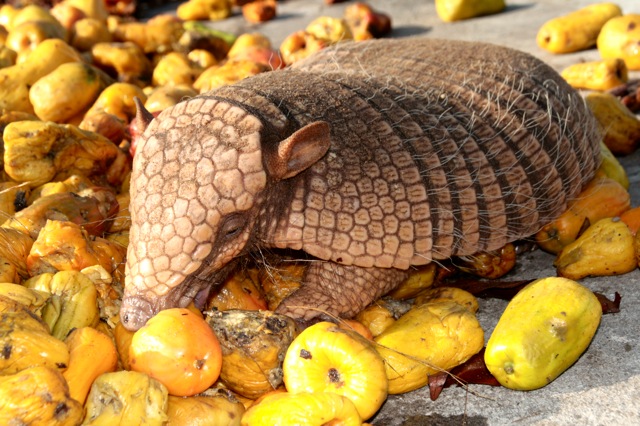The Cashew's Companions
The Cashew Tree has many notable interactions with other species. One of the most important, however, is with none other than humans! Cashews serve as an important export to the countries that harvest them, although the process of getting the actual kernel out of the shell is quite tedious to say the least. The man featured in this photo is removing the nuts from the cashew apple to sell. After he removes the nut, the apples will be used to feed the other animals on his farm. It is in this way during "cashew season," which is September in Northeast Brazil, that the Cashew really does feed everyone.
Another interaction with humans relates to the medical field. This plant has been reported to have antibacterial, anti-inflammatory, cough-soothing, diuretic, and anti-diarrhea properties. The anacardic acid found in the nut is shown to kill many bacteria, both Gram positive and Gram negative, and is also effective against approximately 13 micro-organisms. Other parts of the tree are used for many other things as well. The bark has been used to treat urinary disorders, asthma, skin and muscular problems, bronchitis, and diarrhea. Fruit juice made from the apples has been used in South America to treat influenza. There is also substantial evidence that this plant is effective against Diabetes because it stabilizes blood-glucose levels.
The interaction between humans and Anacardium occidentale is not all good, however. Skin contact with the fresh plant may result in a rash, and many people develop allergic reactions in these cases. Very few people, however, are allergic to the kernel itself. The other thing to be cautious about when dealing with the cashew plant is the oil inside the nut. CNSL (caustic nut shell liquid) causes extreme allergic reaction that results in swelling, blistering and acute dermatitis. Those who consume unroasted and unshelled nuts will experience severe burning and stinging of the mouth and lips.
As mentioned above, the cashew is often used to feed everyone on some farms. This may or may not include sheep, goats, cows, pigs, chickens, and... donkeys! It also serves as an important food source for wild animals, such as the armadillo and the Silver-Beaked Tanager seen below.



